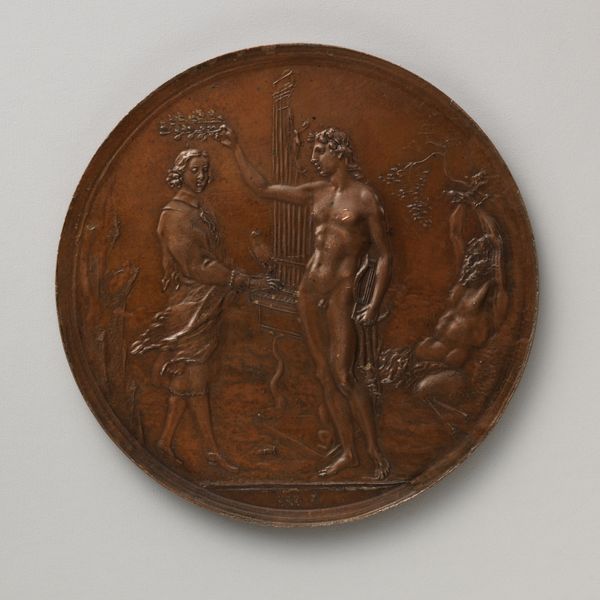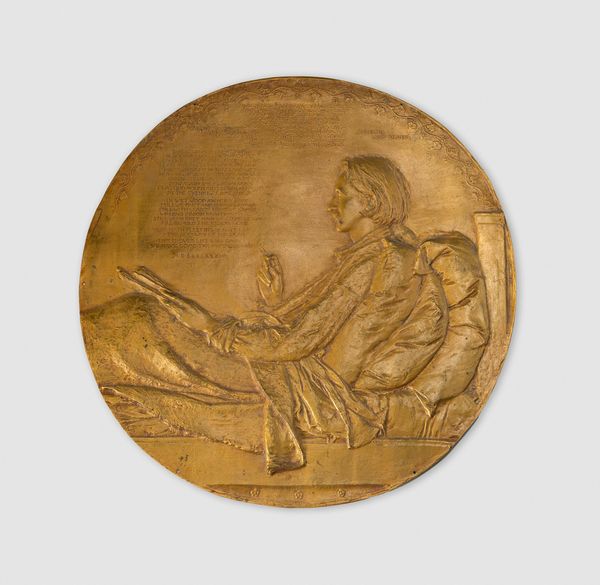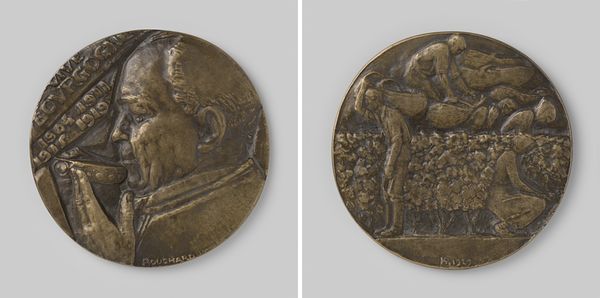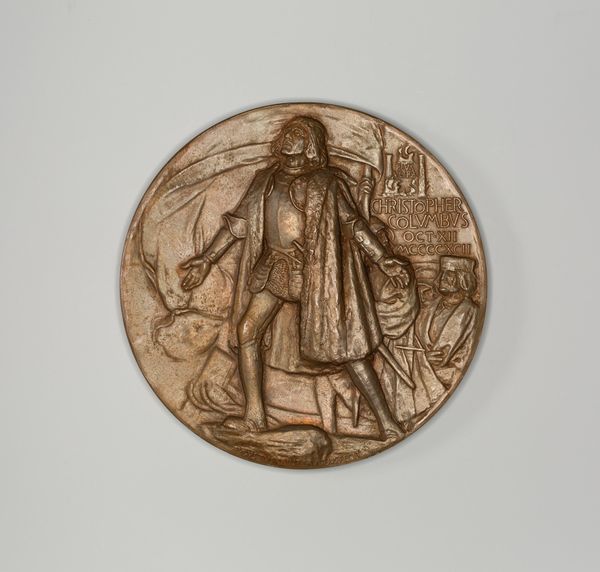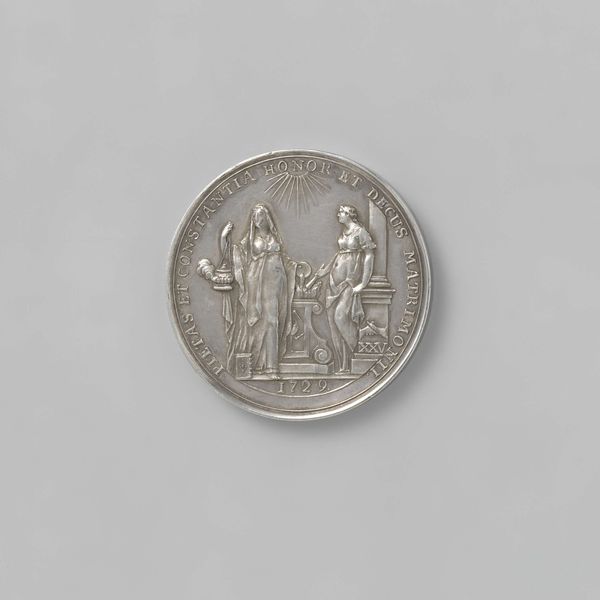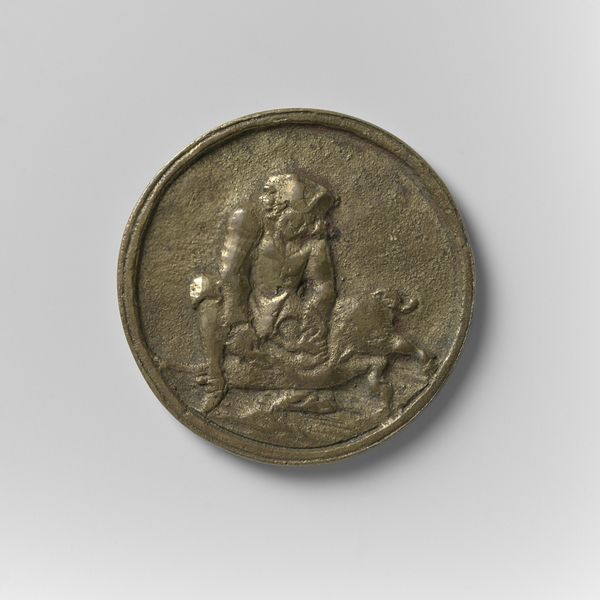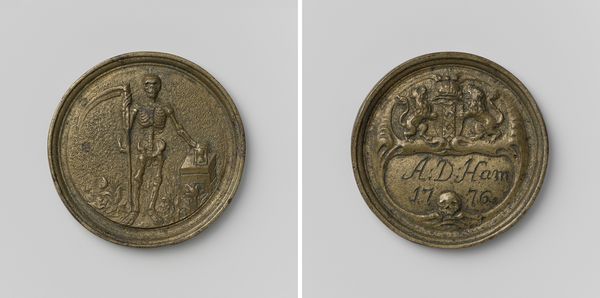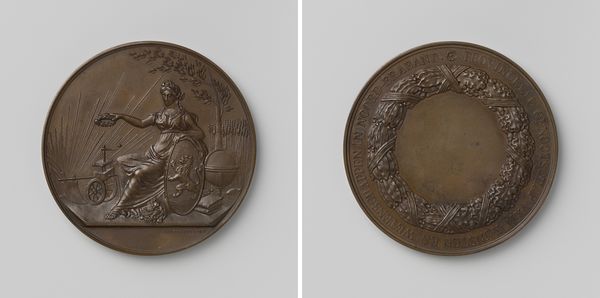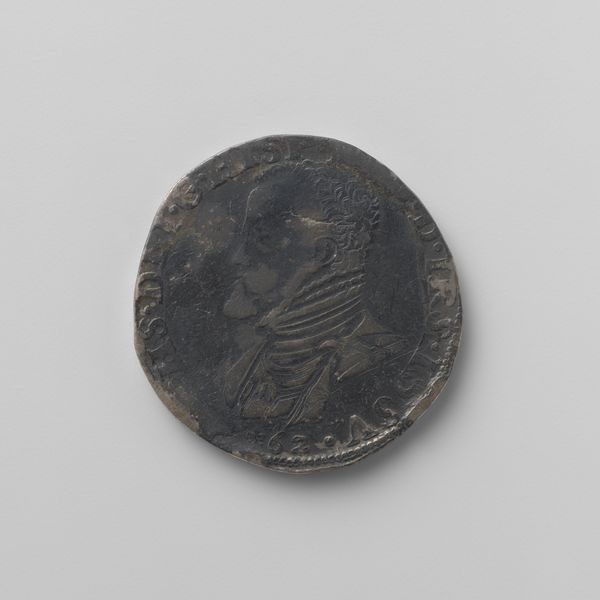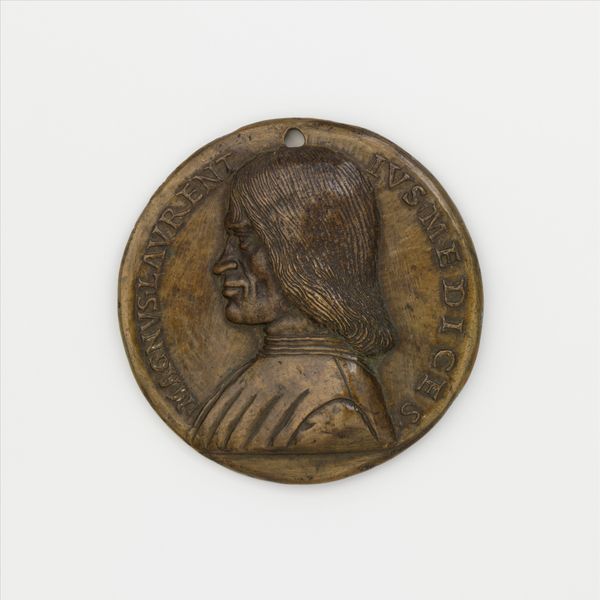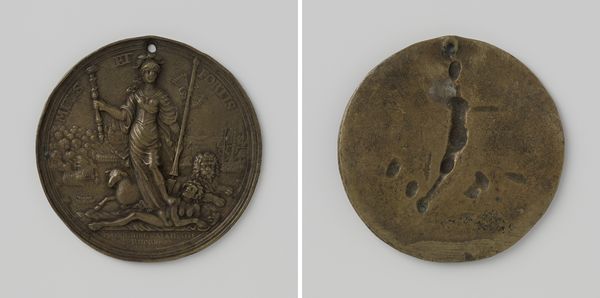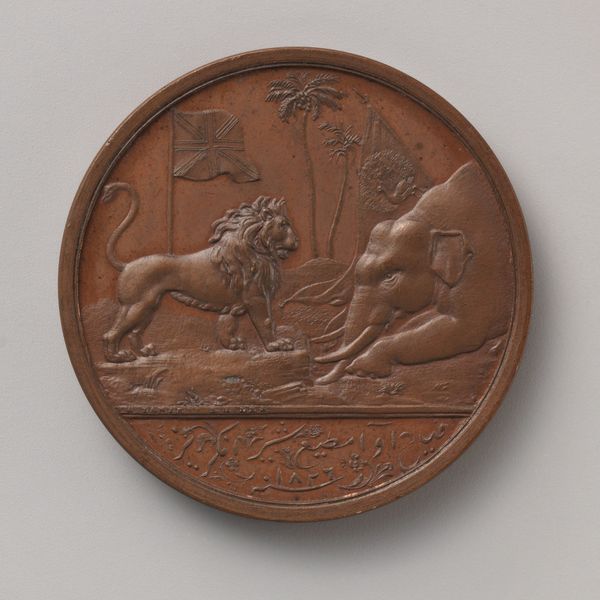
relief, bronze, sculpture
#
portrait
#
sculpture
#
relief
#
bronze
#
figuration
#
sculpture
#
decorative-art
#
italian-renaissance
Dimensions: Diameter: 2 1/2 in. (6.4 cm)
Copyright: Public Domain
Editor: This relief, entitled “Sleeping Amor,” crafted in bronze by Pseudo Francesco Antonio da Brescia sometime between 1495 and 1505, gives off such a melancholic vibe. The winged figure just seems so tired and dejected. What do you see in this piece that informs that sentiment? Curator: That’s a fascinating reaction. What draws me in is the recontextualization of classical mythology through a specific lens – here, childhood. Renaissance artists were obsessed with antiquity, but this Amor, rather than being a powerful god, appears vulnerable, even world-weary. Think about the societal roles assigned to males, even then – how might portraying a male figure as 'sleeping' challenge contemporary views about masculine identity? Editor: It definitely makes him more human, more relatable, like a commentary on the expectations placed upon even mythical figures. Does the medium—bronze—play into that reading? Curator: Absolutely. Bronze, often associated with strength and permanence, is used here to depict something delicate and transient – sleep. That juxtaposition creates tension, doesn’t it? Also, notice the cupid's bow and arrow. How could we interpret their presence in a state of dormancy? Could it mean something for our own human struggles for connection, now put into question in the cupid’s abandonment? Editor: I guess that changes my view! The sculpture initially struck me as simply sad, but now it seems to question societal pressures on something as simple as male expression and expectations to remain alert and prepared for a world always seemingly at war. Curator: Exactly. By engaging with historical context and theoretical frameworks, we unlock deeper levels of meaning. It also teaches that beauty isn't only about aesthetically-pleasing or classical perfection. Editor: I really appreciate your perspective; it adds a dimension I hadn’t considered. It is really something when visual culture acts as a mirror, then and now, right? Curator: Indeed! Hopefully, this exploration inspires others to delve beneath the surface and critically engage with art's potential for social commentary and reflection.
Comments
No comments
Be the first to comment and join the conversation on the ultimate creative platform.
